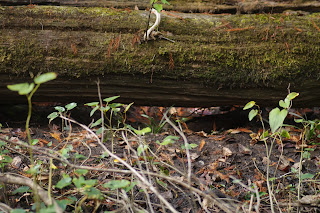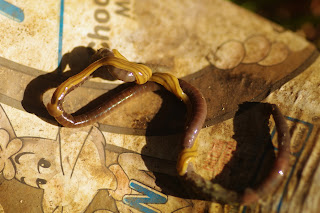The November days are cooler and Sagrei hunting is slow. So I turn my focus to exotic invasive plants. For this visit to the park I pulled out 100 Cesar Weeds, 13 Chinese Tallow Trees and two Ear Trees. The Cesar Weeds here are tall and past the flowering stage. Every time I pulled one I got covered with clinging seeds.
I met three people there who are doing a history of the park. They asked if I would also work on taking out Skunk Vine and Cat's Claw. I don't know these plants and will have to research them. I noticed many dieing Air Potato Vines and they told me the park was spraying to kill them. They warned me not to eat off the Beauty Berry Bushes also because of the spraying.
There is a wet land on one end of a park with a big sign saying something, "Wetlands Restoration, Exotic Vegetation Threatens the ecological longevity..." I have never seen anyone other than me taking out exotics. There are several full grown Chinese Tallow Trees in that wetland and I "girdled" two of them. See the 2nd picture. Girdling is the botany/forestry term for cutting a ring of bark off a tree to strangle it. Now that I think of it, girdling a large exotic invasive tree might do some double good. If the dead tree then provides homes for wildlife, then that is a double bonus.
The first time I learned what girdling was, it was a friend of mine who had tied a dog to a tree. The dog ran around the tree wearing the bark down with its chain. The tree later died.
If the city of Winter Park want to remove these trees it will cost many thousands of dollars. If I kill them and let the dead trees provide homes for wildlife, it will cost nothing.


































